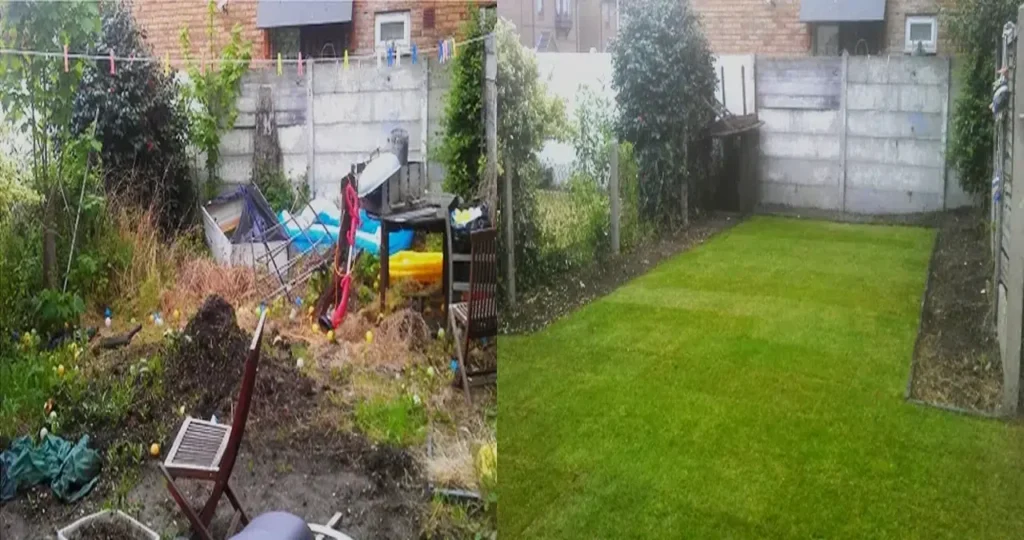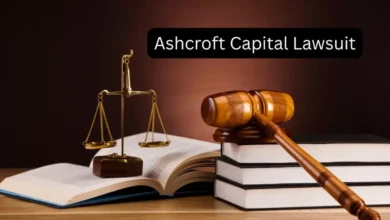Garden Clearance 101: What You Need to Know Before You Start

One of the most essential tasks in maintaining a beautiful and functional garden is garden clearance. Whether preparing for the spring season, tackling an overgrown garden, or simply refreshing your outdoor space, garden clearance is necessary to set the foundation for future growth and landscaping projects. However, many homeowners are unsure where to begin, what tools to use, or how to approach the task effectively.
This comprehensive guide will walk you through everything you need about garden clearance. From planning and preparation to execution and disposal, we’ve got you covered. By the end of this article, you’ll have the knowledge and confidence to tackle garden clearance like a pro.
What is Garden Clearance?

Garden clearance means removing unwanted plants, debris, and other materials from your outdoor space. This may include overgrown shrubs, weeds, tree branches, fallen leaves, dead plants, old garden furniture, and general clutter. The goal of garden clearance is to clear the area of obstacles, making it easier to maintain and improve your garden’s appearance, functionality, and health.
Why is Garden Clearance Important?
Before you dive into garden clearance, it’s essential to understand why it’s so important:
- Improves Garden Aesthetics
A cluttered, overgrown garden can quickly detract from the visual appeal of your home. By clearing the space, you can start fresh and create a more inviting, organized, and beautiful garden. Whether you want a lush, flower-filled space or a minimalist Zen garden, a good clearance is the first step.
- Prevents Pests and Diseases
Overgrown plants, dead leaves, and fallen branches can provide a perfect breeding ground for pests like rodents, insects, and fungi. Garden clearance helps eliminate these areas where pests and diseases thrive, reducing the risk of infestations and plant damage.
- Promotes Healthy Plant Growth
A cleared garden allows plants to grow and receive the necessary sunlight and nutrients. If your plants are overcrowded or hidden under debris, they may struggle to survive. Garden clearance ensures that your plants have enough space and resources to flourish.
- Improves Safety
Fallen branches, sharp objects, or garden tools left around can pose safety hazards, especially if you have children or pets. By clearing the area, you reduce the risk of accidents and create a safer environment for everyone to enjoy.
- Increases Property Value
A well-maintained garden can significantly boost the curb appeal of your home, which in turn can increase its market value. Whether you’re planning to sell your property or want to enjoy it more, garden clearance is an investment that pays off.
Garden Clearance: What to Do Before You Start
Before you start clearing your garden, several important factors must be considered to ensure that the job is done effectively, safely, and efficiently.
- Assess the Garden
Take the time to inspect your garden and evaluate the extent of the clearance needed. Are there overgrown bushes and trees? Do you have piles of leaves or branches that need to be removed? Make a list of the specific areas or tasks you need to focus on so you don’t waste time on things that aren’t priorities.
- Set a Goal
Establish clear objectives for your garden clearance. Do you want to clear space for a new vegetable garden, make room for a patio, or tidy up the area? A goal will help you stay focused and provide direction throughout the process.
- Check Local Regulations
Some areas have restrictions or guidelines for tree trimming, shrub removal, or garden waste disposal. Ensure you know of any local regulations that might apply to your clearance efforts. You might need permits or be required to dispose of waste in specific ways, so doing yourit’sework is essential.
- Plan for Waste Disposal
Garden clearance generates a lot of waste, including green waste, branches, leaves, and possibly broken furniture or old garden decorations. Decide in advance how you will dispose of this waste. Some options include:
- Green Waste Bins: Check if your local council provides green waste bins for compostable materials like leaves and plants.
- Skip Hire: For larger jobs, hiring a skip can be an efficient way to dispose of a significant amount of garden waste.
- Composting: If the waste is mainly plant-based, composting is an eco-friendly option, allowing you to reuse organic matter in your garden.
- Garden Waste Collection Services: Some areas offer professional waste collection services for garden clearance.
Make sure you have a proper waste disposal plan in place before you start working, as managing waste mid-project can be time-consuming.
- Choose the Right Time
The timing of your garden clearance is crucial. If you’re dealing with seasonal debris like fallen leaves or winter branches, wait for the appropriate time of year. If you remove your trees, consider doing so in early spring or late fall, when the garden is less likely to grow actively.
Garden Clearance: Tools and Equipment You’ll Need
To clear your garden, you’ll need a few tools. The exact tools will depend on the size of your garden and the type of clearance required. Here’s a breakdowHere’sssential tools for garden clearance:
- Gloves and Protective Gear
Wearing gloves and protective gear (such as safety goggles, knee pads, and sturdy boots) will protect you from cuts, scrapes, and irritants. Proper gear is necessary for handling your plants, broken branches, or chemicals like weed killers.
- Pruning Shears
Pruning shears are essential for trimming shrubs, small trees, and overgrown plants. Look for a high-quality pair with sharp blades that can make clean cuts.
- Loppers
Loppers are ideal for cutting thicker branches and stem that pruning shears can’t handle. Lopcan’trsIf you have large bushes or trees to clear, it will save you time and effort.
- Hedge Trimmer
If you have hedges or bushes that need trimming, a hedge trimmer (manual or powered) can make the job much quicker and more efficient.
- Garden Rake
A garden rake is essential for gathering fallen leaves, grass clippings, and other debris into piles for easy disposal.
- Spade or Shovel
A spade or shovel is handy for removing roots or large plants, as well as unwanted weeds.
- Wheelbarrow or Garden Trolley
A wheelbarrow or garden trolley is indispensable for transporting waste from your garden to the disposal area. It will save you multiple trips and make the process more efficient.
- Chainsaw (for Larger Jobs)
For larger trees or thick branches, a chainsaw is often necessary. If you’re unsure how you’re one, it might be best to hire a professional to avoid accidents.
- Garden Waste Bags
Garden waste bags are perfect for collecting smaller debris such as leaves, small branches, and plant clippings. They are durable and can often be disposed of with green waste collections.
Steps for Effective Garden Clearance
- Clear Debris and Clutter
Start by removing loose debris, such as fallen leaves, branches, and broken garden furniture. This step will give you a clearer view of the space and make it easier to handle larger clearance tasks.
- Trim Overgrown Plants and Shrubs
Next, focus on cutting back overgrown plants, bushes, and shrubs. Use pruning shears, loppers, or a hedge trimmer to shape and reduce their size. Remember to dispose of these trimmings as you go.
- Remove Dead Plants and Weeds
Pull up any dead plants, weeds, and unwanted grasses. This will clean up your garden and prevent future weed growth. If you’re dealing with invasive species, be extra careful to remove their roots entirely.
- Clear Out Large Items
For larger items, such as old garden furniture, broken fences, or disused pots, please remove them and set them aside for disposal or repurposing.
- Dispose of the Waste
Once your garden is cleared, it’s time to dispose of the waste. Follow your pre-planned waste disposal strategy, whether composting, issuing green waste bins, or hiring a skip.
Final Thoughts
Garden clearance is essential for anyone looking to improve their outdoor space. With the right tools, a clear plan, and some effort, you can transform your garden into a more beautiful, functional, and healthy environment. Whether you handle the job yourself or hire a professional, clearing your garden correctly will pay off in the long run.
Following the tips outlined in this guide ensures that your garden clearance is effective, efficient, and safe. Remember that clearing your garden isn’t just about waking up – it’s about creating a foundation for future growth and enjoyment. Happy gardening!
FAQS
- What is the best time of year to do garden clearance?
The ideal time for garden clearance depends on your climate and the types of plants in your garden. However, early spring and late fall are generally the best times to clear garden debris. Spring is a great time to remove any dead growth before new plants emerge, while late fall is ideal for clearing leaves and preparing your garden for winter. Avoid garden clearance during periods of active plant growth to minimize stress on your plants.
- How do I dispose of garden waste after clearance?
Garden waste disposal methods vary depending on the amount and type of waste. Common options include:
- Your local council provides green waste bins for plant debris and leaves.
- Skip hire if you have a large volume of garden waste.
- Composting for organic waste such as plants, leaves, and grass.
- Garden waste collection services, if available in your area, for scheduled pick-ups. Check your local guidelines for waste disposal to ensure you’re following your procedures.
- Can I clear my garden myself, or should I hire a professional?
It depends on the size and complexity of the job. Small gardens with minimal debris can be cleared with the right tools. However, more extensive gardens with overgrown plants, heavy-duty tasks (like tree removal), or significant waste may require professional help. Hiring a professional garden clearance service can save you time and effort, especially for complex or large-scale clearances.
- What tools do I need for an essential garden clearance?
The essential tools for garden clearance include:
- Gloves and protective gear (safety goggles, knee pads)
- Pruning shears and loppers for cutting back plants and shrubs
- Hedge trimmer for trimming larger bushes
- Garden rake for collecting debris
- Shovel or spade for digging out weeds and roots
- Wheelbarrow or garden trolley for transporting waste
- Chainsaw (for large trees or thick branches, if needed). Ensure the tools are well-maintained to make the job easier and safer.
- How can I make garden clearance more eco-friendly?
There are several eco-friendly practices you can follow during garden clearance:
- Composting organic waste instead of sending it to landfills.
- Recycling or repurposing materials like garden furniture or containers.
- Using natural, non-toxic methods to remove weeds and pests.
- Reducing waste by avoiding single-use plastic garden tools or bags.
- Plant native species and create wildlife-friendly spaces to support local biodiversity. By adopting sustainable methods, you can make your garden cleaner and contribute positively to the environment.





